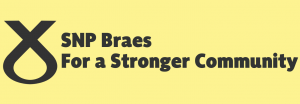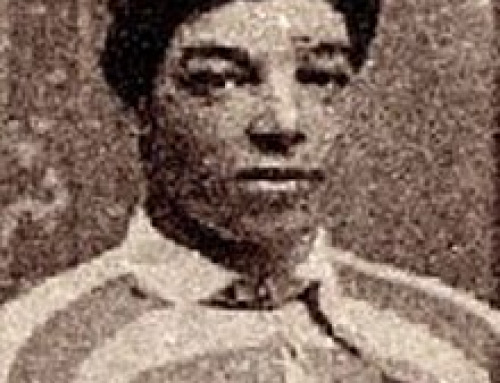“As long as but a hundred of us remain alive, never will we on any conditions be brought under English rule. It is in truth not for glory, nor riches, nor honours, that we are fighting, but for freedom – for that alone, which no honest man gives up but with life itself”.

These are the best known words in the Declaration of Arbroath, foremost among Scotland’s state papers and the most famous historical record held by National Records of Scotland. The Declaration is a letter written in 1320 by the barons and whole community of the kingdom of Scotland to the pope, asking him to recognise Scotland’s independence and acknowledge Robert the Bruce as the country’s lawful king. It was written in Latin and was sealed by eight earls and about forty barons. Over the centuries various copies and translations have been made, including a microscopic edition. The Declaration was written during the long war of independence with England which started with Edward I’s attempt to conquer Scotland in 1296. When the deaths of Alexander III and his granddaughter Margaret, Maid of Norway, left Scotland without a monarch, Edward used the invitation to help choose a successor as an excuse to revive English claims of over lordship. When the Scots resisted, he invaded. Edward refused to allow William Wallace’s victory at Stirling Bridge in 1297 to derail his campaign. In 1306 Robert the Bruce seized the throne and began a long struggle to secure his position against internal and external threat. His success at Bannockburn in 1314, when he defeated an English army under Edward II, was a major achievement, but the English still did not recognise Scotland’s independence or Bruce’s position as king. On the European front, by 1320 Scottish relations with the papacy were in crisis after the Scots defied papal efforts to establish a truce with England. When the pope excommunicated Robert I (the Bruce) and three of his barons, the Scots sent the Declaration of Arbroath as part of a diplomatic counter-offensive. The pope wrote to Edward II urging him to make peace, but it was not until 1328 that Scotland’s independence was acknowledged. The Declaration was probably drawn up by Bernard, Abbot of Arbroath. It was authenticated by seals, as documents at that time were not signed. Only 19 seals now remain of what might have been 50 originally, and many are in poor condition. This is the sole survivor of three created at the time. The others were a letter from the King of Scots, Robert I, and a letter from four Scottish bishops which all made similar points. The Declaration was intended to assert Scotland’s status as an independent, sovereign state and defend Scotland’s right to use military action when unjustly attacked. The Declaration was little known until the late 17th century and is unmentioned by any of Scotland’s major 16th century historians. In the 1680s, the Latin text was printed for the first time and translated into English in the wake of the Glorious Revolution, after which time it was sometimes described as a independence. The document held by the National Records of Scotland is the “file copy” of the Declaration: the only version to survive in its original form. It was kept with the rest of the national records in Edinburgh Castle until the seventeenth century. When work was being done on the castle, the Declaration was taken for safekeeping to Tyninghame, the home of the official in charge of the records. While there it suffered damage through damp and it returned to the custody of the Deputy Clerk Register (the predecessor of the Keeper of the Records of Scotland) in 1829. Conservation staff at the NRS now closely monitor the Declaration to ensure it survives for many centuries to come. Although the Declaration was damaged during its absence from Edinburgh Castle, the full text was known from an engraving made in the early eighteenth century, which was re-engraved around 1815 by William Home Lizars and Daniel Lizars. However by 1314 only Edinburgh, Berwick-upon-Tweed, Roxburgh, and Stirling remained in English hands. In June 1314 the Battle of Bannockburn had secured Robert Bruce’s position as King of Scots; and Stirling, the Central Belt, and much of Lothian came under Robert’s control while the defeated Edward II’s power on escaping to England via Berwick weakened under the sway of his cousin Henry, Earl of Lancaster. King Robert was thus able to consolidate his power, and sent his brother Edward Bruce to claim the Kingdom of Ireland in 1315 with an army landed in Ulster the previous year with the help of Gaelic lords from the Isles. Edward Bruce died in 1318 without achieving success, but the Scots campaigns in Ireland and in northern England were intended to press for the recognition of Robert’s crown by King Edward. At the same time, it undermined the House of Plantagenet’s claims to over lordship of the British Isles and halted the Plantagenets’ effort to absorb Scotland as had been done in Ireland and Wales. Thus were the Scots nobles confident in their letters to Pope John of the distinct and independent nature of Scotland’s kingdom; the Declaration of Arbroath was one such. According to historian David Crouch, “The two nations were mutually hostile kingdoms and peoples, and the ancient idea of Britain as an informal empire of peoples under the English king’s presidency was entirely dead.” The text describes the ancient history of Scotland, in particular the Scotti, the Gaelic who were the forbears of the Scots who the Declaration claims have origins in Scythia prior to migrating via Spain to Great Britain “1,200 years from the Israelite people’s crossing of the Red Sea”. It also describes how the Scots had previously “thrown out the Britons and completely destroyed the Picts” , resisted the invasions of “the Norse, the Danes and the English” and “held itself ever since, free from all slavery”. It then claims that in the Kingdom of Scotland, “one hundred and thirteen kings have reigned of their own Blood Royal, without interruption by foreigners” The text compares Robert Bruce with the Biblical warriors Judah Maccabee and Joshua. It also makes a number of points: that Edward I of England had unjustly attacked Scotland and perpetrated atrocities; that Robert the Bruce had delivered the Scottish nation from this peril; and, most controversially, that the independence of Scotland was the prerogative of the Scottish people, rather than the King of Scots.

Strange Facts
Just a few months later some of those who added their signatures to the document had been tried for their role in treason. Lord David de Brechin, who didn’t’ plot but knew of the plot and never told anyone, was executed and drawn through the streets of Perth. William II de Soules was found guilty, and incarcerated in an act of clemency, only to be found dead later in mysterious circumstances.
“Roger de Mowbray’s end was perhaps the most gruesome. He died in custody before his trial and yet his body was brought before the parliament and made to stand in order to receive judgement and sentencing of being drawn, hung and beheaded! Bruce did however intervene at the end to allow a decent burial, probably to enhance his own reputation after a merciless coup of dissenters.
2020 marked the 700th anniversary of the Declaration of Arbroath 700th anniversaries do not come around all that often and NRS staff were greatly looking forward to exhibiting this unique document in the National Museum of Scotland. However following guidance from the Scottish Government on Covid-19/Coronavirus the exhibition of the Declaration has been postponed. NRS hopes that in due course the exhibition will be rescheduled so that members of the public have the opportunity to see this iconic document
In December 1318 a law was enacted in parliament against anyone spreading rumours against King Robert and his government—a sure sign that there was much unrest and speculation about the future. A few months after the Declaration was written, a conspiracy against King Robert was revealed and its leaders dealt with savagely in early August 1320. The ‘official’ line was that the conspirators intended to oust Robert and install William Soules as king. The incident is therefore known as the ‘Soules Conspiracy’. It has been argued that William Soules would not have been a credible king, and that the conspiracy was really an attempt to restore the Balliol dynasty to the throne. Edward Balliol was certainly in England in July 1320. Four of the nobles named as sponsors of the Declaration were among the conspirators. Were they already plotting against Robert when they affixed their seals to the document ?
The Scottish document pre-dates the United States revolution by about 450 years but some – such as former Senate majority leader Trent Lott – are convinced it inspired the American Declaration of Independence, despite a lack of historical evidence. The annual Tartan Day celebrations in America – founded by Senator Lott in 1998 – take place on 6 April because that is the anniversary of the Declaration of Arbroath

